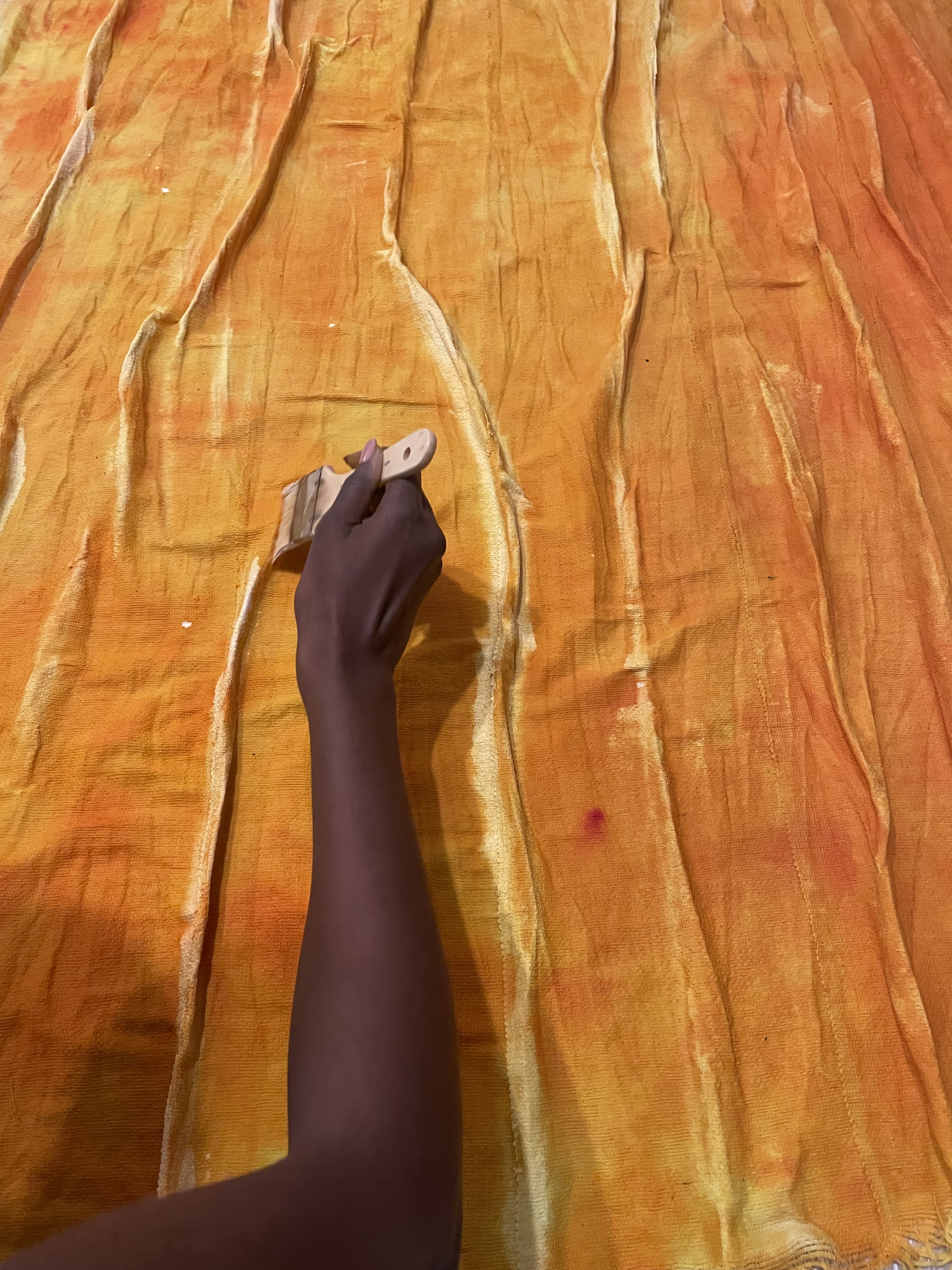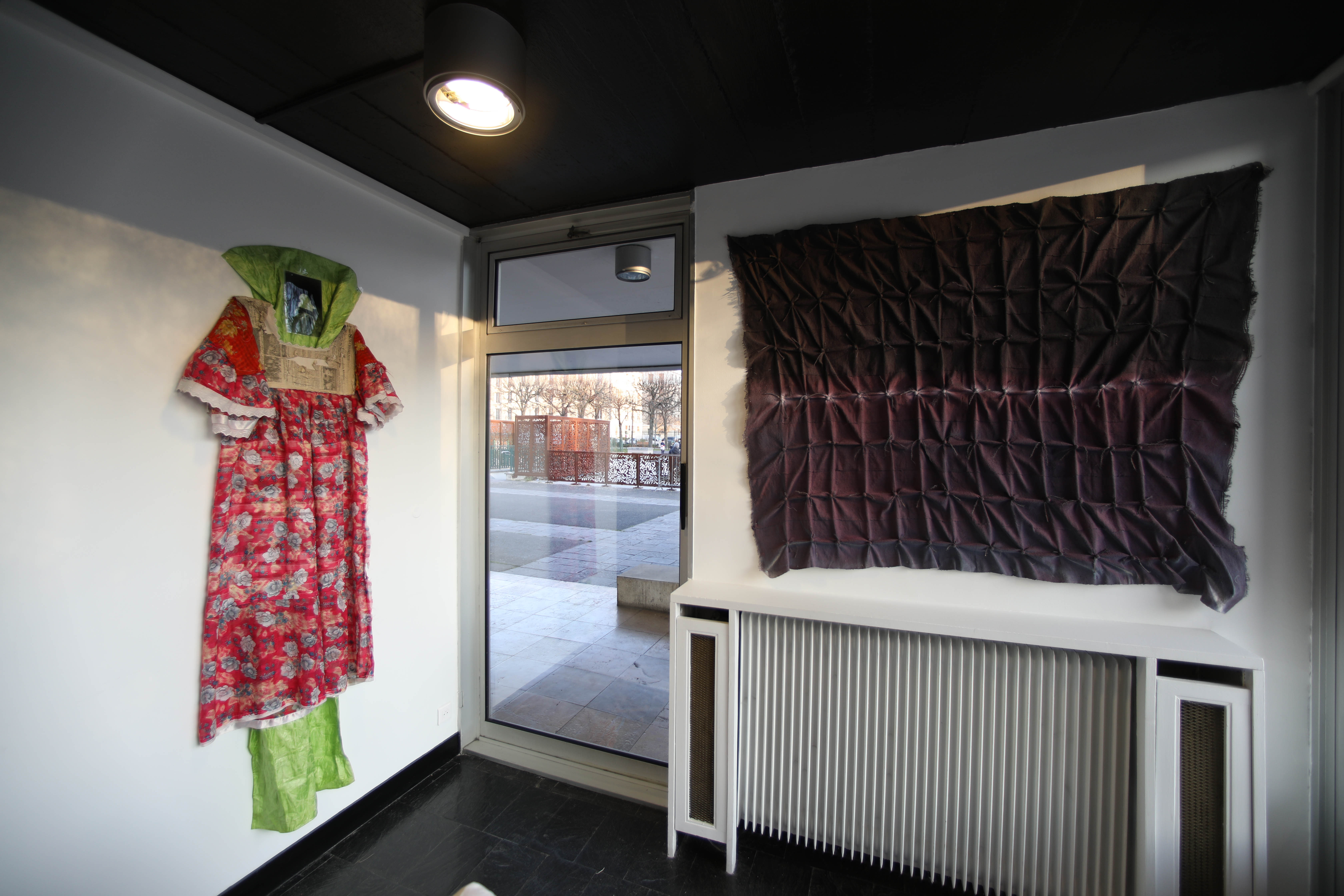Leepi Jhedi
2021 - ongoing
Working with the artisans and fabrics revealed many memories and a deeper interest. We traced the material, the know-how, the places, and emotions.
Among those objects a very specific hand-woven cotton fabric caught our attention and resonated with us.
Le travail avec les artisans et les tissus a révélé de nombreux souvenirs et un intérêt plus profond. Nous avons retrouvé la matière, le savoir-faire, les lieux et les émotions.
Parmi ces objets, un tissu de coton tissé à la main très spécifique a attiré notre attention et a résonné en nous.
Among those objects a very specific hand-woven cotton fabric caught our attention and resonated with us.
Le travail avec les artisans et les tissus a révélé de nombreux souvenirs et un intérêt plus profond. Nous avons retrouvé la matière, le savoir-faire, les lieux et les émotions.
Parmi ces objets, un tissu de coton tissé à la main très spécifique a attiré notre attention et a résonné en nous.
It is known as "rabbal" in Wolof or "sëru jare" or "leepi" in Pulaar.
The leepi is known for its use in clothing and accessories making, for ceremonies as well as for moments of rituals and exchanges between individuals and families.
Having grown up with this fabric, it was always present around us and we've been having an unconscious conversation with it. We have seen them being used for different outfits and occasions. So these materials hold their own stories and memories. They constitute the archives and links between moments and thus provide information about certain contexts.
We want to approach them in a way that inscribes our own stories.
By exploring what is intrinsically contained in the materials, we give them the attention they require.
The materials (fabrics) we used to make our costumes become our support and receive the images they inspired.
Il est appelé "rabbal" en wolof ou "sëru jare" ou "leepi" en pulaar.
Le leepi est connu pour son utilisation dans la confection de vêtements et d'accessoires, pour les cérémonies ainsi que pour les moments de rituels et d'échanges entre les individus et les familles.
Ayant grandi avec ce tissu, il a toujours été présent autour de nous et nous avons eu une conversation inconsciente avec lui. Nous les avons vus utilisés pour différentes tenues et occasions. Ces matériaux renferment donc leurs propres histoires et souvenirs. Ils constituent des archives et des liens entre les moments et fournissent ainsi des informations sur certains contextes. Nous voulons les approcher d'une manière qui inscrive nos propres histoires.
En explorant ce qui est intrinsèquement contenu dans les matériaux, nous leur accordons l'attention qu'ils requièrent. Les matériaux (tissus) que nous avons utilisés pour confectionner nos costumes deviennent notre support et reçoivent les images qu'ils ont inspirées.
The leepi is known for its use in clothing and accessories making, for ceremonies as well as for moments of rituals and exchanges between individuals and families.
Having grown up with this fabric, it was always present around us and we've been having an unconscious conversation with it. We have seen them being used for different outfits and occasions. So these materials hold their own stories and memories. They constitute the archives and links between moments and thus provide information about certain contexts.
We want to approach them in a way that inscribes our own stories.
By exploring what is intrinsically contained in the materials, we give them the attention they require.
The materials (fabrics) we used to make our costumes become our support and receive the images they inspired.
Il est appelé "rabbal" en wolof ou "sëru jare" ou "leepi" en pulaar.
Le leepi est connu pour son utilisation dans la confection de vêtements et d'accessoires, pour les cérémonies ainsi que pour les moments de rituels et d'échanges entre les individus et les familles.
Ayant grandi avec ce tissu, il a toujours été présent autour de nous et nous avons eu une conversation inconsciente avec lui. Nous les avons vus utilisés pour différentes tenues et occasions. Ces matériaux renferment donc leurs propres histoires et souvenirs. Ils constituent des archives et des liens entre les moments et fournissent ainsi des informations sur certains contextes. Nous voulons les approcher d'une manière qui inscrive nos propres histoires.
En explorant ce qui est intrinsèquement contenu dans les matériaux, nous leur accordons l'attention qu'ils requièrent. Les matériaux (tissus) que nous avons utilisés pour confectionner nos costumes deviennent notre support et reçoivent les images qu'ils ont inspirées.


“Leepi jhedi” ( “cotton fabrics woven in seven strips" in pulaar) places “rabbal” as a primary support for experimenting and understanding the material. It happens through painting and also multimedia installation.
The idea is to embark on an exploration to discover the fabric and create new relationships with it. The gradations of colors remind us of this journey from universe to universe, with no perceptible border, nor time and order in the transition of the color.
In this body of work, leppi become our canva. A canva already loaded with its own history. The goal here is to put our nuances, our imaginations and our aspirations without confusing the primary story, what we know of it anyway.
“Leepi jhedi” ("tissus de coton tissés en sept bandes" en pulaar) place le "rabbal" comme support principal pour expérimenter et comprendre le matériau. Cela se fait par le biais de la peinture et de l'installation multimédia.
L'idée est de s'embarquer dans une exploration pour découvrir le tissu et créer de nouvelles relations avec lui. Les dégradés de couleurs nous rappellent ce voyage d'univers en univers, sans frontière perceptible, ni temps ni ordre dans la transition de la couleur.
Dans cet ensemble de travaux, les leppi deviennent nos canva. Un canva déjà chargé de sa propre histoire. Le but ici est de mettre nos nuances, nos imaginations et nos aspirations sans brouiller l'histoire première, ce que nous en connaissons en tout cas.
The idea is to embark on an exploration to discover the fabric and create new relationships with it. The gradations of colors remind us of this journey from universe to universe, with no perceptible border, nor time and order in the transition of the color.
In this body of work, leppi become our canva. A canva already loaded with its own history. The goal here is to put our nuances, our imaginations and our aspirations without confusing the primary story, what we know of it anyway.
“Leepi jhedi” ("tissus de coton tissés en sept bandes" en pulaar) place le "rabbal" comme support principal pour expérimenter et comprendre le matériau. Cela se fait par le biais de la peinture et de l'installation multimédia.
L'idée est de s'embarquer dans une exploration pour découvrir le tissu et créer de nouvelles relations avec lui. Les dégradés de couleurs nous rappellent ce voyage d'univers en univers, sans frontière perceptible, ni temps ni ordre dans la transition de la couleur.
Dans cet ensemble de travaux, les leppi deviennent nos canva. Un canva déjà chargé de sa propre histoire. Le but ici est de mettre nos nuances, nos imaginations et nos aspirations sans brouiller l'histoire première, ce que nous en connaissons en tout cas.
Installation views from the following exhibitions :
AKAA FAIR, 2021
And Session, Cité Internationale des Arts, Paris, 2021
TOCUTUGOL, Institut Français du Sénégal, Dakar, 2023
AKAA FAIR, 2021
And Session, Cité Internationale des Arts, Paris, 2021
TOCUTUGOL, Institut Français du Sénégal, Dakar, 2023
For more information about the works, please visit this page.


